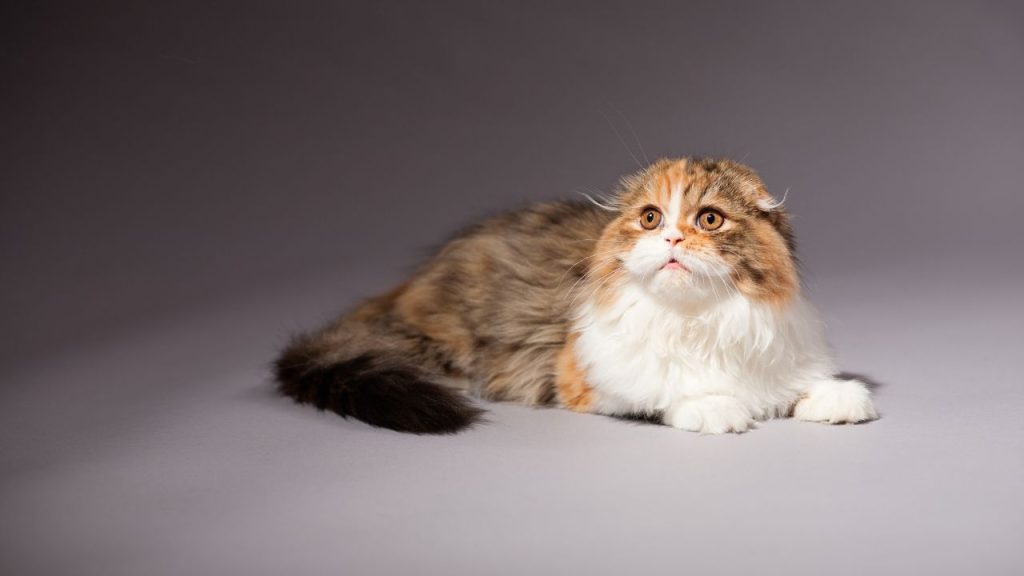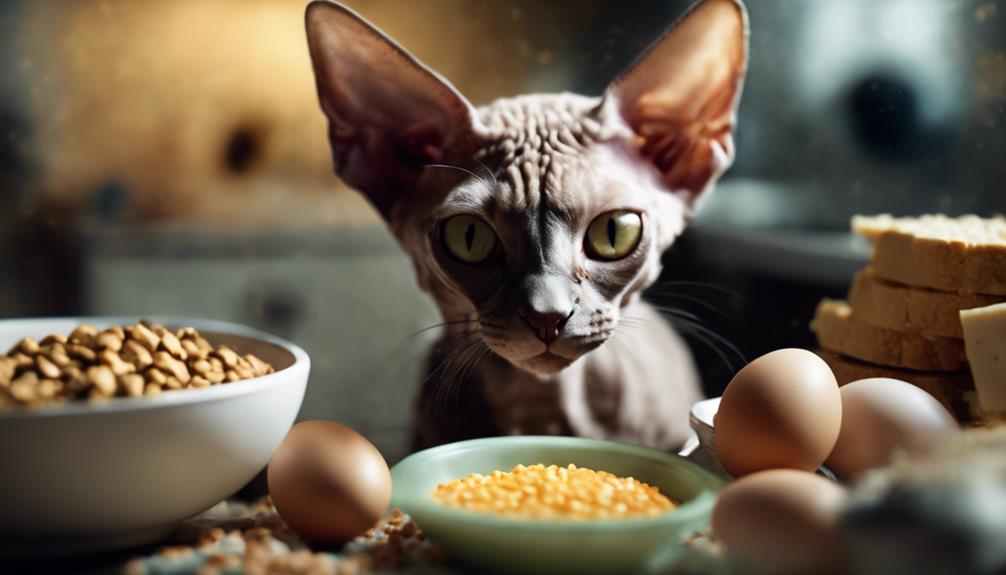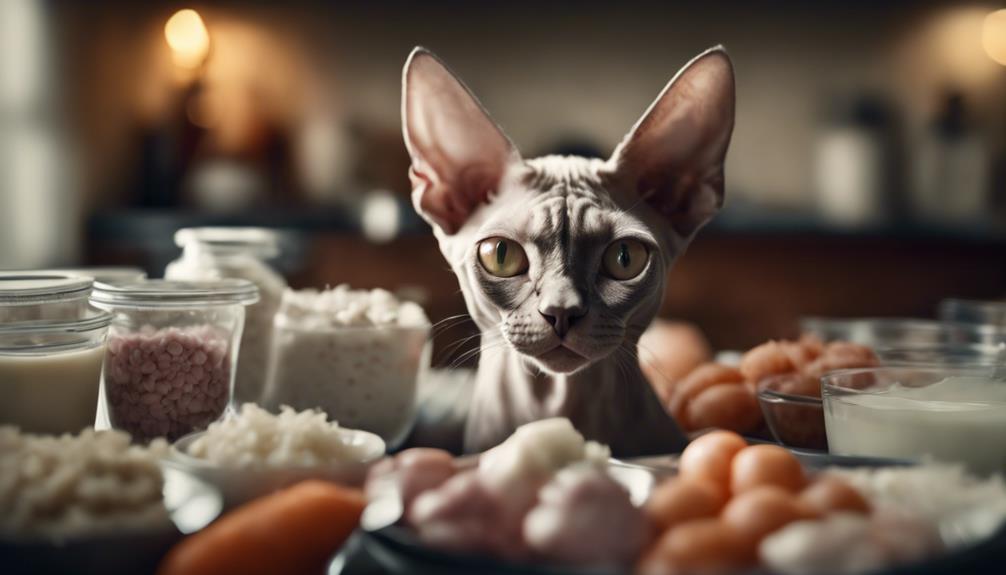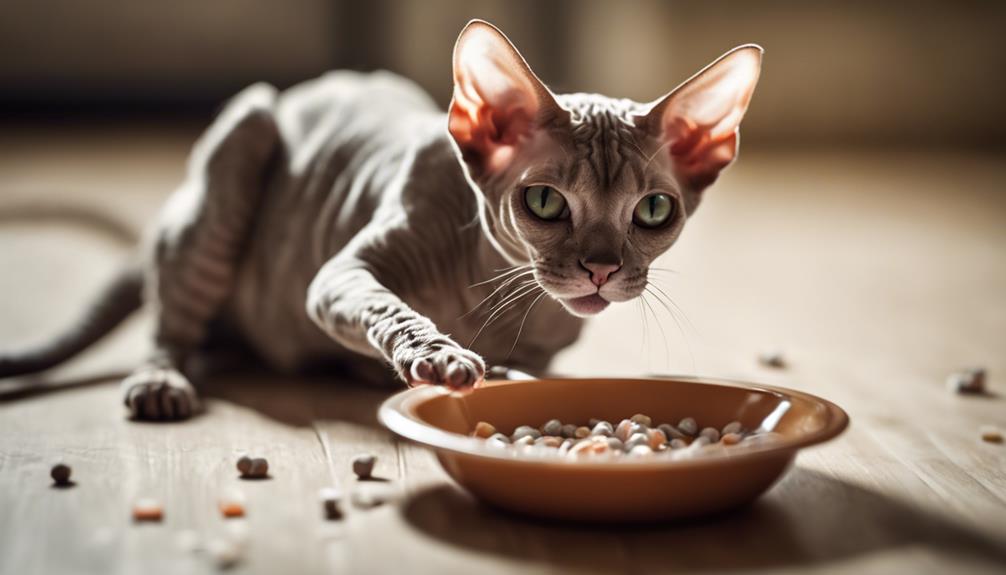Cats are known for their unique and adorable physical features, and their ears are no exception. Some cats have folded ears, while others have curled ears. While these may seem like small differences, they are actually the result of genetic mutations that have been selectively bred over time.
Folded ears are characterized by a sharp bend in the ear that either points towards or away from the skull. This is due to a genetic mutation that affects the cartilage in the ear, causing it to fold over on itself. This mutation was first discovered in a Scottish Fold cat in the 1960s and has since been selectively bred to create a breed of cats with this unique feature.
Curled ears, on the other hand, are characterized by ears that curl backwards towards the back of the cat’s head. This is also the result of a genetic mutation that affects the cartilage in the ear. This mutation was first discovered in a breed of cats called the American Curl, which was selectively bred to create a breed of cats with curled ears. While both folded and curled ears are unique and adorable, they can sometimes be associated with health issues, so it’s important to understand the differences between the two.
What Are Folded Ears on a Cat?
Folded ears on a cat are a unique trait that is caused by a genetic mutation affecting the cartilage in the ear. This condition is primarily associated with the Scottish Fold breed, but it has been observed in other breeds as well.
The Scottish Fold breed is the most well-known breed with folded ears. The breed originated in Scotland in the 1960s when a barn cat with folded ears was found. The mutation that causes the ears to fold is dominant, meaning that if one parent has folded ears, there is a 50% chance that their offspring will inherit the trait.
The folded ears on a cat are caused by a defect in the cartilage that makes up the ear. The cartilage in the ear is responsible for providing the ear with its shape and structure. In cats with folded ears, the cartilage is not as strong as it should be, causing the ears to fold forward and downward.
It is essential to note that not all cats with folded ears are Scottish Folds. Other breeds that have been observed with folded ears include the American Curl, the Ukrainian Levkoy, the Donskoy, the Jungle Curl, the Maine Coon, the Turkish Van, the Devon Rex, and the Persian. However, these breeds’ folded ears are caused by a different mutation, which results in a curled ear rather than a folded one.
In conclusion, folded ears on a cat are a unique trait that is caused by a genetic mutation that affects the cartilage in the ear. While Scottish Folds are the most well-known breed with folded ears, other breeds have also been observed with this trait. It is essential to understand that not all cats with folded ears are Scottish Folds, and other breeds have different mutations that cause their ears to curl rather than fold.
What Are Curled Ears on a Cat?
Curled ears on cats are a result of a genetic mutation that affects the cartilage of the ear. This mutation causes the ears to curl or fold in a unique way, depending on the breed. There are two types of curled ears: folding to the inside (folding forward) or curling to the outside (curling backward).
The American Curl is one of the most well-known breeds with curled ears. This breed has ears that curl backward, giving them an arched shape that is unique among cats. The breed was first discovered in California in 1981 when a stray kitten with curled ears was found. The kitten was taken in by a family who named her Susie, and she became the foundation cat for the American Curl breed.
Another breed with curled ears is the Highland Lynx. This breed has ears that curl backward and are covered in tufts of fur, giving them a wild and exotic appearance. The Highland Lynx is a relatively new breed that was developed in the 1990s by crossing the Desert Lynx with the Jungle Curl and the American Curl.
While curled ears are most commonly associated with specific breeds, they can occur in domestic shorthair cats as well. However, it is important to note that not all cats with curled ears are purebred or even part of a recognized breed.
In summary, curled ears on cats are a result of a genetic mutation that affects the cartilage of the ear. This mutation can result in ears that fold forward or curl backward, depending on the breed. While some breeds are known for their curled ears, they can also occur in domestic shorthair cats.
What Is the Difference Between Folded and Curled Ears on a Cat?
Cats come in different breeds, each with unique physical characteristics. One of the most distinguishing features of a cat is its ears. While most cats have erect ears, some breeds have folded or curled ears. In this section, we will explore the difference between folded and curled ears on a cat.
Folded Ears
Folded ears are a genetic mutation that affects certain breeds of cats. The most well-known breed with folded ears is the Scottish Fold. The ears of a Scottish Fold are small and folded forward and downward, giving the cat a unique and adorable appearance. However, not all Scottish Folds have folded ears. Some may have straight ears due to their genetics.
Another breed with folded ears is the Ukrainian Levkoy. This breed is relatively new and was created by crossing the Scottish Fold with the Donskoy, a hairless breed. The Ukrainian Levkoy has large, folded ears that are set low on the head.
Curled Ears
Curled ears are another genetic mutation that affects certain breeds of cats. The American Curl is the most well-known breed with curled ears. The ears of an American Curl are arched and curl backward over the cat’s head. The degree of curl can vary, and breed standards dictate that a show-quality cat will have a 180-degree backward curl, while a pet cat may have only a 90-degree curl.
Other breeds with curled ears include the Jungle Curl, Highlander, and Susie. The Jungle Curl has ears that curl backward and have a wild look. The Highlander has curled ears that are set high on the head and have a gentle curve. The Susie has curled ears that are medium-sized and have a slight curve.
Comparison
The main difference between folded and curled ears is the direction of the fold. Folded ears fold forward and downward, while curled ears curl backward. Additionally, folded ears are usually smaller than curled ears and are set lower on the head. Curled ears, on the other hand, are usually larger and are set higher on the head.
In conclusion, folded and curled ears are unique physical characteristics that make certain breeds of cats stand out. While they may look different, both types of ears are the result of a genetic mutation and are not harmful to the cat’s health.

How Do Folded and Curled Ears Affect a Cat’s Hearing?
The shape of a cat’s ears can affect their hearing and balance. Both folded and curled ears can have an impact on a cat’s auditory abilities, but in different ways.
Folded Ears
Cats with folded ears, such as Scottish Folds, have a unique ear structure that can impact their hearing. The cartilage in their ears is folded, which can cause a narrowing of the ear canal. This can result in reduced high-frequency hearing and a decrease in sound localization abilities.
Additionally, cats with folded ears may be more prone to ear infections due to the limited air circulation in the ear canal. Ear infections can cause pain and discomfort, leading to a decrease in hearing abilities.
Curled Ears
Curled ears, such as those found in American Curl cats, have a different impact on a cat’s hearing. The curled shape of the ear does not affect the ear canal or the inner ear, but it can impact the vestibular system.
The vestibular system is responsible for a cat’s balance and spatial orientation. The shape of the ear canals and the position of the ears on a cat’s head play a crucial role in the vestibular system’s proper functioning. In cats with curled ears, the vestibular system may be slightly altered, leading to a potential impact on their balance and coordination.
Conclusion
While both folded and curled ears can impact a cat’s hearing and balance, the specific effects vary depending on the ear’s shape. If you have a cat with either of these unique ear structures, it is essential to monitor their hearing abilities and keep an eye out for any signs of ear infections or balance issues.
Cat Breeds with Folded Ears
Folded ears are a unique and distinctive feature of some cat breeds. These breeds have a natural mutation that affects the cartilage in their ears, causing them to fold forward and downward. This gives the cats a cute and charming appearance that many people find irresistible. Here are some of the most popular cat breeds with folded ears:
Scottish Fold
The Scottish Fold is perhaps the most well-known cat breed with folded ears. This breed originated in Scotland in the 1960s and quickly became popular around the world. Scottish Folds have a round head, large round eyes, and a sweet expression. They are known for their calm and affectionate nature, and they make great pets for families with children. Scottish Folds come in a variety of colors and patterns, including white, black, blue, cream, and more.
American Curl
The American Curl is another cat breed with unique curled ears. This breed originated in California in the 1980s and quickly gained popularity. American Curls have a distinctive appearance, with their curled ears and almond-shaped eyes. They are known for their friendly and playful nature, and they get along well with children and other pets. American Curls come in a variety of colors and patterns, including tabby, black, and white.
Ukrainian Levkoy
The Ukrainian Levkoy is a relatively new cat breed that originated in Ukraine in the early 2000s. This breed has a distinctive appearance, with its folded ears and hairless body. Ukrainian Levkoys are known for their friendly and affectionate nature, and they make great pets for families with children. They come in a variety of colors, including black, white, and gray.
Donskoy
The Donskoy is a hairless cat breed that originated in Russia in the 1980s. This breed has a unique appearance, with its folded ears and wrinkled skin. Donskoys are known for their playful and affectionate nature, and they get along well with children and other pets. They come in a variety of colors, including black, white, and gray.
In conclusion, cat breeds with folded ears are unique and charming. They make great pets for families with children, and they are known for their friendly and affectionate nature. If you are considering getting a cat with folded ears, be sure to do your research and find a breed that is right for you.
Cat Breeds with Curled Ears
Curled ears are a unique and adorable trait that some cat breeds possess. Here are a few cat breeds with curled ears:
American Curl
The American Curl is one of the most popular cat breeds with curled ears. This breed originated in California when a stray cat with unique ears named Shulamith appeared on a suburban family’s doorsteps, the Rugas, in Lakewood, California, in 1981. This breed has a moderate to long length coat, and their ears curl backward and upward, giving them an adorable and unique look.
Highlander
The Highlander is a relatively new breed of cat that is a cross between the Desert Lynx and the Jungle Curl breeds. This breed has a muscular build, a wild appearance, and a thick, plush coat. Their ears curl backward and upward, adding to their wild look.
Susie
Susie is a breed of cat that was developed in Russia. It is a cross between the Siamese and the British Shorthair breeds. This breed has a short, dense coat, and their ears curl backward and upward, giving them a unique and elegant look.
Siamese
The Siamese breed is one of the oldest and most popular cat breeds in the world. This breed is known for its distinctive blue eyes, sleek body, and short coat. Some Siamese cats have ears that curl backward and upward, adding to their unique appearance.
Domestic Shorthair
The Domestic Shorthair is a common breed of cat that can have a variety of coat colors and patterns. Some Domestic Shorthair cats have ears that curl backward and upward, giving them a unique and adorable look.
In conclusion, curled ears are a unique and adorable trait that some cat breeds possess. American Curl, Highlander, Susie, Siamese, and Domestic Shorthair are a few breeds with this distinctive feature.
Unique Ear Shapes in Cats
Cats are known for their unique ear shapes, which can vary greatly from breed to breed. Some cats have folded ears, while others have curled ears. Some cats have tufted or fringed ears, while others have flared or owl-like ears. In this section, we will explore some of the most unique ear shapes in cats.
Folded Ears
Folded ears are a genetic mutation that is found in several cat breeds, including the Scottish Fold and the Highland Fold. These cats have ears that are folded forward and downward, giving them a distinctive look. The fold in their ears is caused by a cartilage mutation that affects the shape of the ear.
Curled Ears
Curled ears are another genetic mutation that is found in several cat breeds, including the American Curl and the Selkirk Rex. These cats have ears that curl backward, giving them an owl-like appearance. The curl in their ears is caused by a mutation in the cartilage that affects the shape of the ear.
Tufted Ears
Tufted ears are found in several cat breeds, including the Maine Coon and the Norwegian Forest Cat. These cats have ears that are tufted at the tips, giving them a wild and rugged appearance. The tufted tips of their ears are caused by a genetic mutation that affects the growth of the ear hair.
Fringed Ears
Fringed ears are found in several cat breeds, including the Pixiebob and the Desert Lynx. These cats have ears that are fringed with hair, giving them a wild and untamed look. The fringed edges of their ears are caused by a genetic mutation that affects the growth of the ear hair.
Flared Ears
Flared ears are found in several cat breeds, including the Bengal and the Ocicat. These cats have ears that are flared at the base, giving them a wide and alert appearance. The flared shape of their ears is caused by a genetic mutation that affects the shape of the ear.
In conclusion, cats have a wide variety of ear shapes that are determined by genetic mutations. These unique ear shapes give each breed a distinctive look and personality. Whether they have folded ears, curled ears, tufted ears, fringed ears, or flared ears, cats are truly fascinating creatures.
Health Issues Related to Folded and Curled Ears in Cats
Folded and curled ears are unique physical characteristics of some cat breeds. While they may look adorable, these ear types can lead to various health issues in cats. In this section, we will discuss some of the health problems related to folded and curled ears in cats.
Folded Ears
Folded ears are a result of a genetic mutation that affects the cartilage in a cat’s ears. This mutation can cause skeletal problems, which can lead to other health issues. For instance, cats with folded ears may be prone to developing hematoma, a condition where blood accumulates between the skin and cartilage of the ear. This can be caused by trauma or constant shaking of the head.
Moreover, cats with folded ears are also at a higher risk of developing squamous cell carcinoma, a type of skin cancer. This is because the skin in their ears is often exposed to the sun, and the folds can trap dirt and debris, increasing the risk of infection.
Curled Ears
Curled ears, on the other hand, are a result of a genetic mutation that affects the outer ear’s shape. While cats with curled ears do not have the same skeletal problems as those with folded ears, they can still experience some health issues.
One common problem is otitis externa, an inflammation of the outer ear canal. This can be caused by ear mites, allergies, or infections. Cats with curled ears may also be more prone to frostbite, especially if they live in cold climates.
Treatment and Prevention
If you have a cat with folded or curled ears, it’s essential to take steps to prevent health issues. Regular cleaning of the ears can help prevent infections, and keeping your cat’s ears protected from the sun can lower the risk of skin cancer.
If your cat does develop a health issue related to their ear type, there are various treatments available. Medications can be used to treat infections, while surgery may be necessary for more severe issues like hematoma.
In conclusion, while folded and curled ears may look cute, they can lead to various health issues in cats. It’s essential to take steps to prevent these problems and seek treatment promptly if your cat does develop any ear-related health issues.
Caring for Cats with Folded or Curled Ears
Cats with folded or curled ears require special attention when it comes to grooming and care. Here are some tips to help you take care of your feline friend.
Grooming
Cats with folded or curled ears are prone to ear infections, so it’s important to keep their ears clean and dry. Use a damp cotton ball or cloth to gently wipe the inside of their ears. Do not use cotton swabs as they can push wax and debris further into the ear canal. You can also use a specially formulated ear cleaning solution recommended by your veterinarian.
Regular grooming is also important for cats with lush coats. Brush your cat’s fur at least once a week to remove any tangles or mats. Short-haired cats may not require as much grooming, but it’s still important to give them a good brush every now and then to remove loose hair and keep their coat shiny.
Cat Breeds with Curled Ears
There are several breeds of cats with curled ears, including the American Curl. These cats have a medium-sized body, large eyes, and a vocal, friendly, and affectionate personality. They are also intelligent, active, and playful, making them great pets for families and individuals alike.
Living Environment
Cats with folded or curled ears can adapt to different living environments, but they do require regular exercise and mental stimulation. Provide your cat with plenty of toys and scratching posts to keep them entertained and engaged. If you have a barn or outdoor space, consider letting your cat explore and play outside under supervision.
Conclusion
Caring for cats with folded or curled ears requires some extra attention, but it’s worth it to keep your furry friend healthy and happy. Regular grooming, a stimulating living environment, and proper care can help your cat thrive. If you have any concerns about your cat’s health or behavior, consult with your veterinarian.




